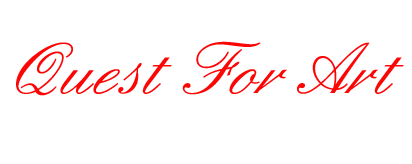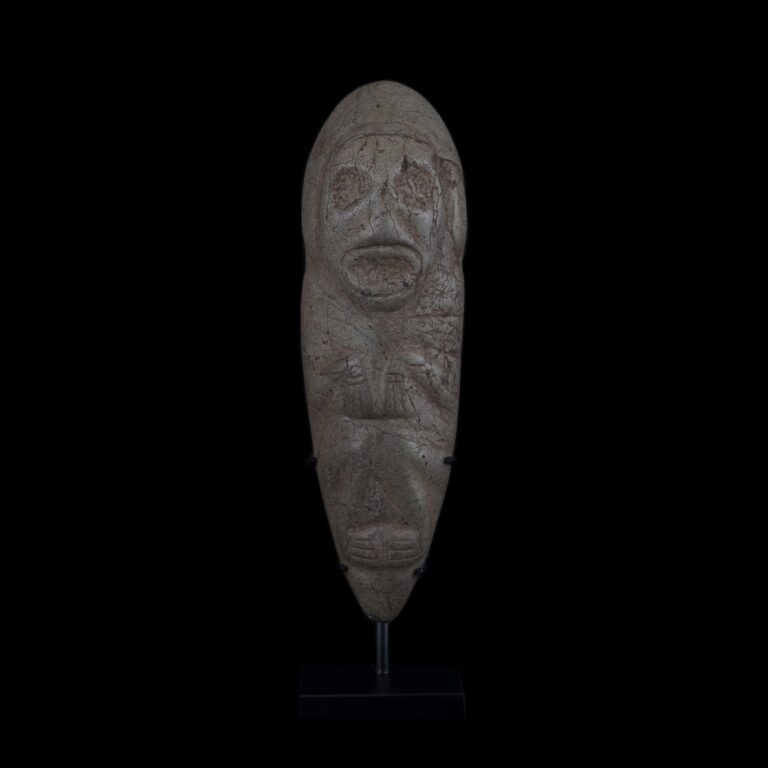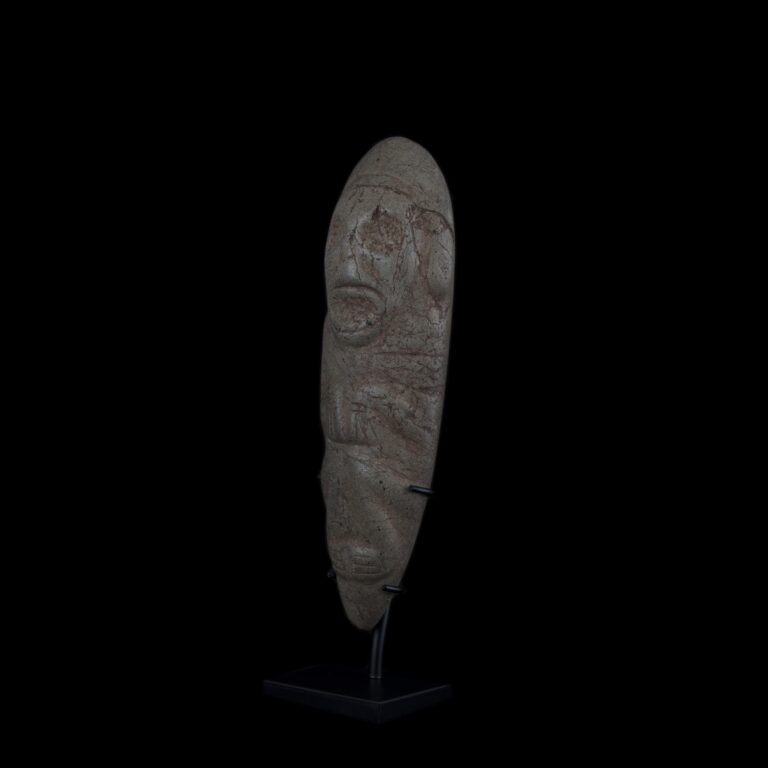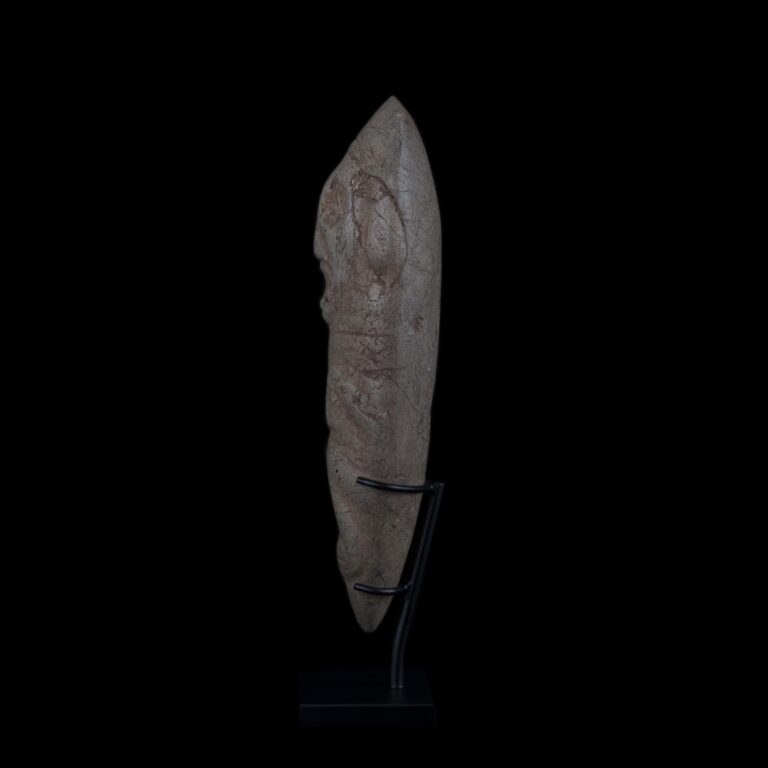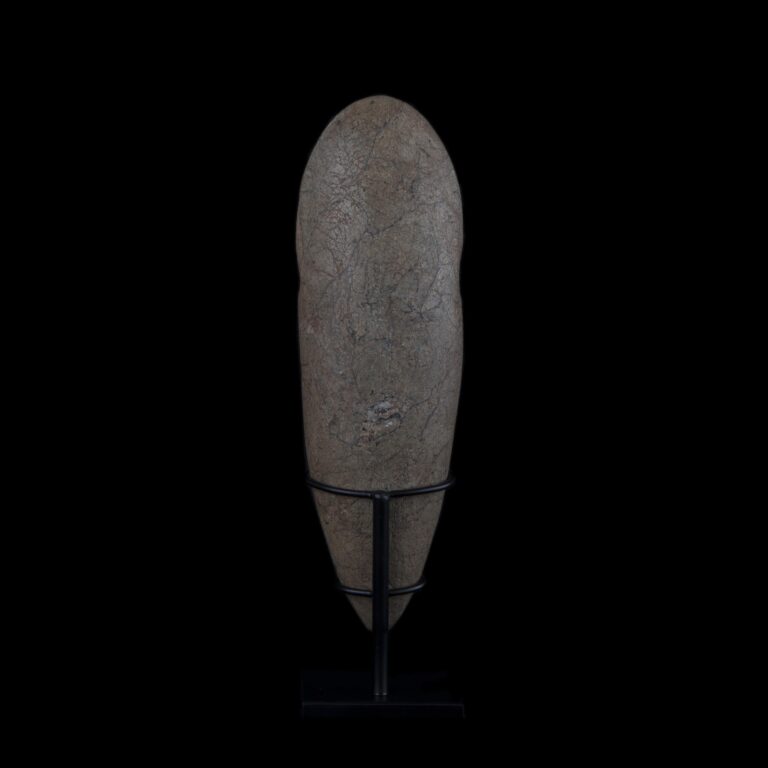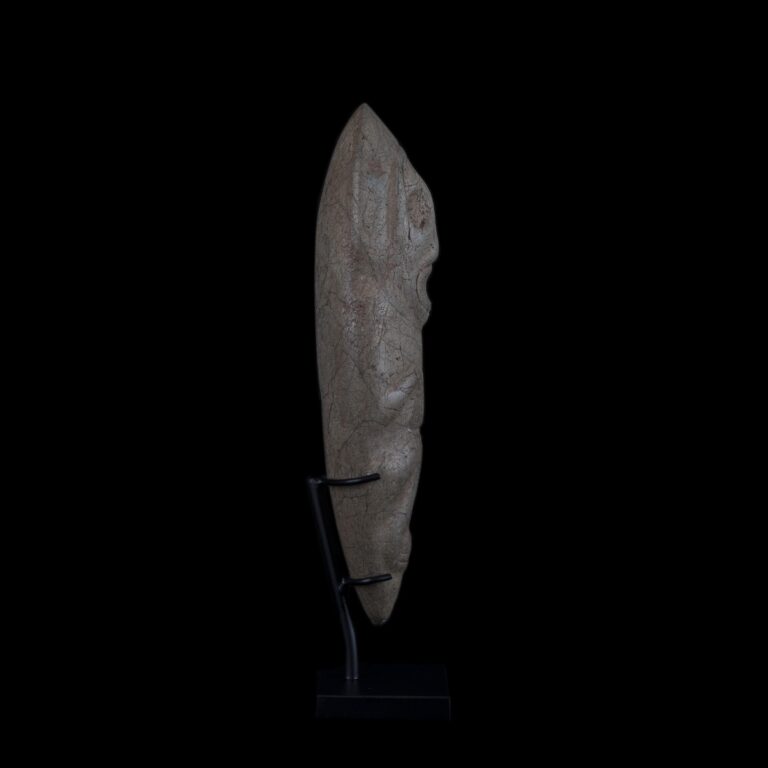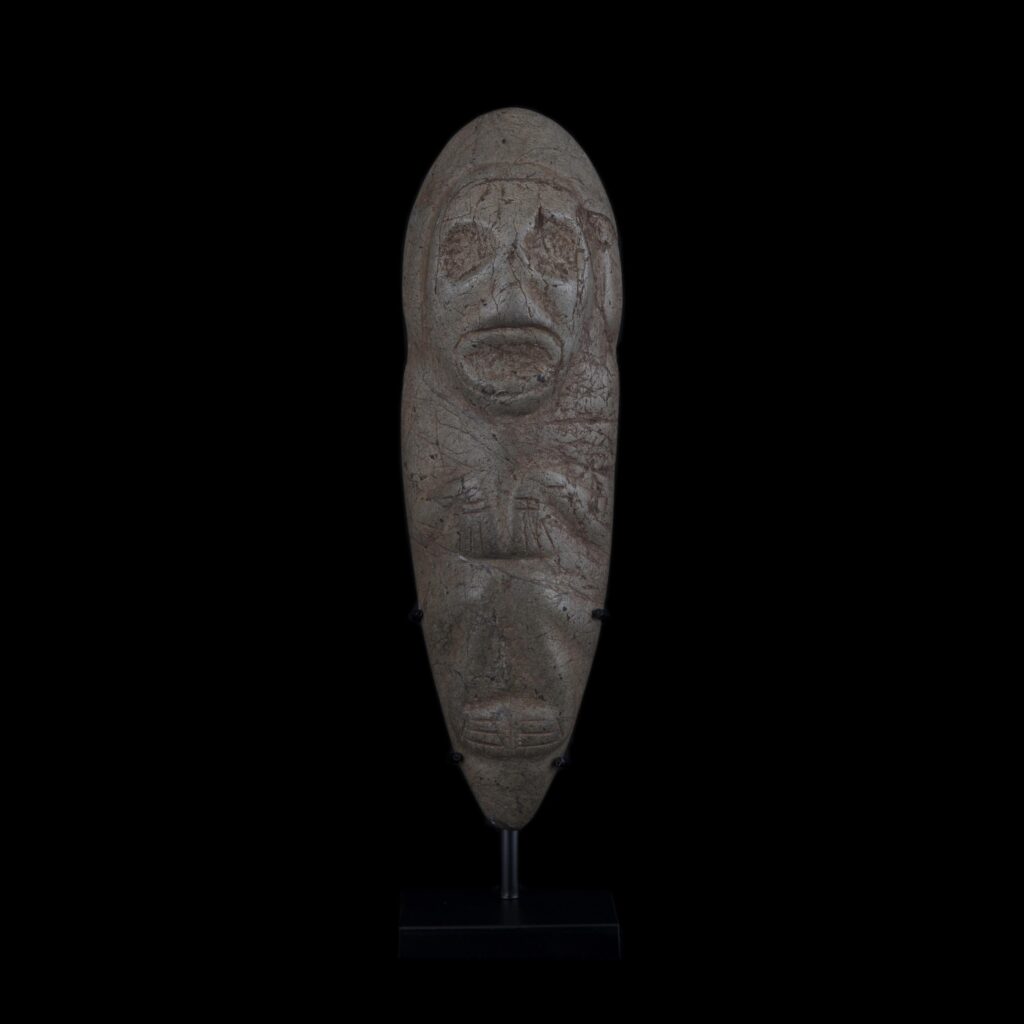
Taíno sculpture, Taíno culture, Dominican Republic.
DESCRIPTION/EXPERTISE
The Taíno were part of a complex mosaic of native cultures inhabiting the islands of the Caribbean. The Taíno were the first indigenous people of the westen hemisphere to meet Spanish explorers. When Christopher Columbus landed on Hispaniola, the island which is nowadays Haiti and The Dominican Republic, in 1492, the native inhabitants of the island identified themselves as Taínos – a term meaning ‘good’, ‘prudent’ or ‘noble’.
These long spatulate devices were used for purging prior to cohoba ingestion. They were inserted into the throat to cleanse the body and thus intensify the drugs effect. Most were made from manatee ribs, wood and shell. The end held during insertion was usually carved into a human or animal like cemi.
The Taíno were part of a complex mosaic of native cultures inhabiting the islands of the Caribbean. The Taíno were the first indigenous people of the westen hemisphere to meet Spanish explorers. When Christopher Columbus landed on Hispaniola, the island which is nowadays Haiti and The Dominican Republic, in 1492, the native inhabitants of the island identified themselves as Taínos – a term meaning ‘good’, ‘prudent’ or ‘noble’.
These long spatulate devices were used for purging prior to cohoba ingestion. They were inserted into the throat to cleanse the body and thus intensify the drugs effect. Most were made from manatee ribs, wood and shell. The end held during insertion was usually carved into a human or animal like cemi.
MEDIUM
PROVENANCE
Ex Private Belgian collection (1961-1988)
Ex Paul Kessels, Antwerp
LITERATURE:
L. Roberts, Taíno Sculpture: Art of the Gods, SBP Books, 2014
E.I. Christensen, The Art of Haiti, Art Alliance Press, 1975
L-G. Atkinson (ed.), The Earliest Inhabitants: The Dynamics of the Jamaican Taíno, University of the West Indies Press, 2006
SIZE
PRICE
Expertly mounted
All dimensions are without the mounting
Object collected in Dominican Republic and incorporated in European collection at beginning of the 1960’s.
